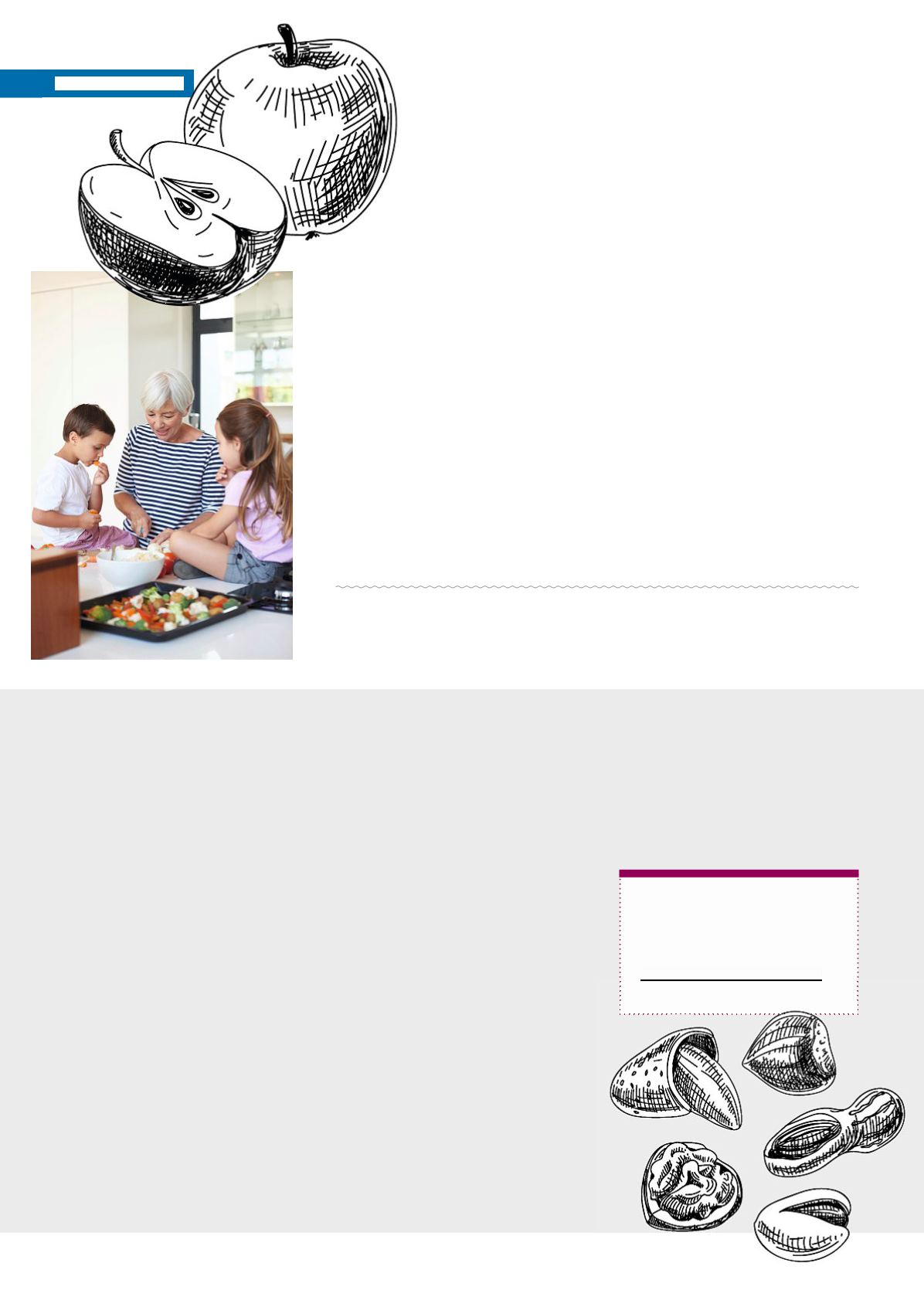
36
Why?
Iron deficiency is common in people
with undiagnosed and untreated
coeliac disease because the area of the
gut where iron is absorbed is damaged.
This means that iron from foods is
not absorbed very well leading to iron
deficiency.
How much?
The recommended daily allowance
(RDA) for iron is 8.7mg/day for men
and postmenopausal women. For
younger women it is 14.8mg/day, with
additional requirement recommended
during pregnancy.
Iron – help support your body’s
red blood cell production
What foods?
There are two types of iron:
• haem iron from animal sources
• non-haem iron from plant sources
Haem iron from animal sources are better
absorbed by the body than those from
plants. Sources of haem iron include red
meat and liver (pregnant women should
avoid liver and liver products because of
high vitamin A content).
Good sources of non-haem iron in
the gluten-free diet include dark green
vegetables (kale and spinach), pulses
(peas, beans and lentils), dried fruit
(raisins, apricots, and figs), nuts and
seeds.
LIVING WELL
What is a portion?
• One banana
• One apple
• A couple of plums
• 3 heaped tablespoons of cooked
vegetables or beans or pulses
• 1 glass of orange juice
• 1 heaped tablespoon of dried fruit
What foods?
Eating at least one or two portions of
fruit and vegetables at every meal and
as a snack will make sure you reach your
5-a-day, and frozen, fresh, dried, canned
and juiced fruits and vegetables all count.
DID YOU KNOW?
Around a quarter of adults are
iron deficient when they are first
diagnosed with coeliac disease.
Only around 15% of adults are meeting this
target and as a nation we eat less than three
portions of fruit and vegetables per person a day.
Why?
We should all be eating more fruit
and vegetables. Fruit and vegetables
are vital for good health and provide
us with a wide range of vitamins and
minerals.
How much?
Current Government guidelines
recommend we eat at least five
portions of fruit and vegetables a day.
Fruit & veg -
eat a rainbow


